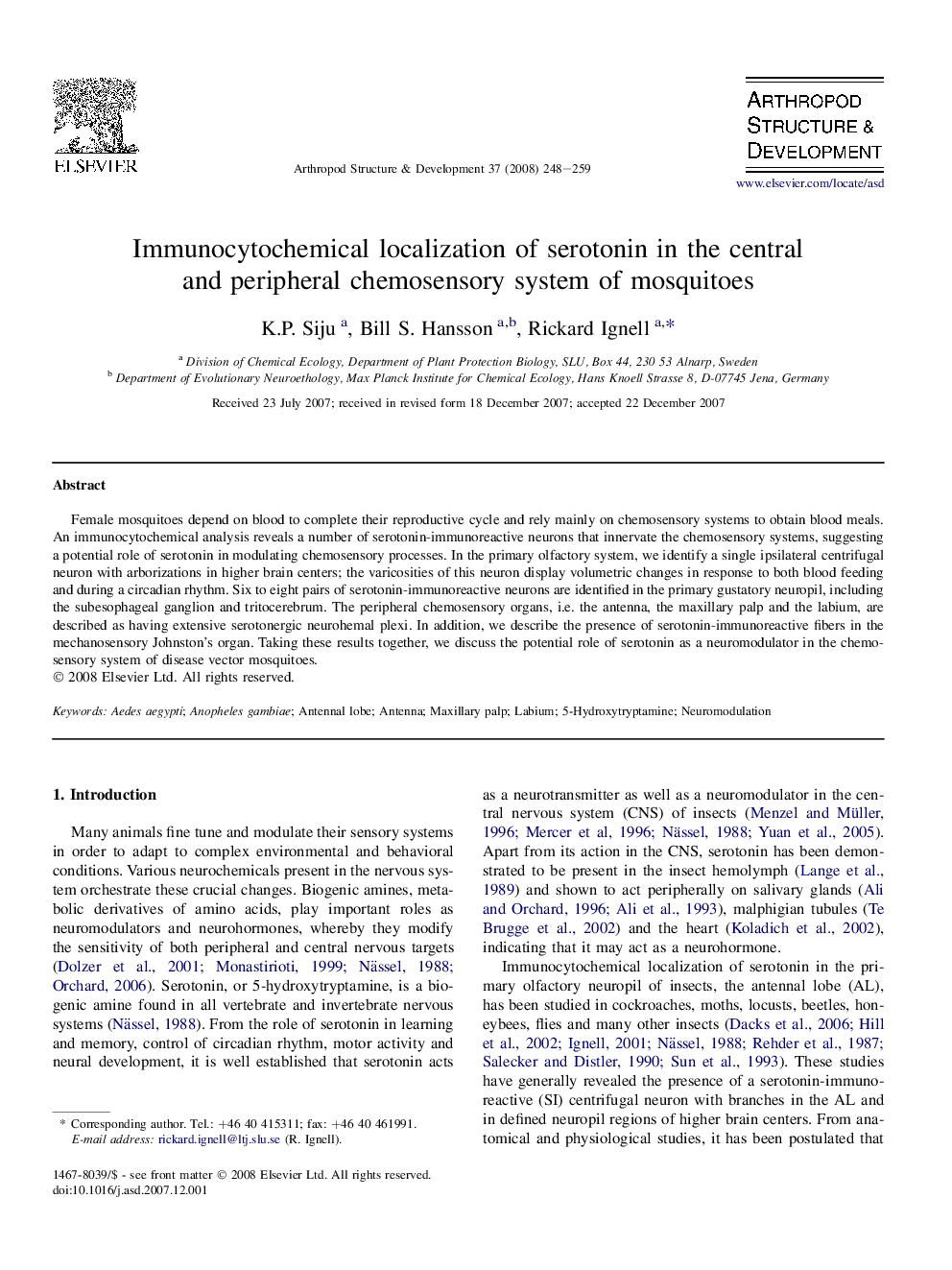| Article ID | Journal | Published Year | Pages | File Type |
|---|---|---|---|---|
| 2778935 | Arthropod Structure & Development | 2008 | 12 Pages |
Female mosquitoes depend on blood to complete their reproductive cycle and rely mainly on chemosensory systems to obtain blood meals. An immunocytochemical analysis reveals a number of serotonin-immunoreactive neurons that innervate the chemosensory systems, suggesting a potential role of serotonin in modulating chemosensory processes. In the primary olfactory system, we identify a single ipsilateral centrifugal neuron with arborizations in higher brain centers; the varicosities of this neuron display volumetric changes in response to both blood feeding and during a circadian rhythm. Six to eight pairs of serotonin-immunoreactive neurons are identified in the primary gustatory neuropil, including the subesophageal ganglion and tritocerebrum. The peripheral chemosensory organs, i.e. the antenna, the maxillary palp and the labium, are described as having extensive serotonergic neurohemal plexi. In addition, we describe the presence of serotonin-immunoreactive fibers in the mechanosensory Johnston's organ. Taking these results together, we discuss the potential role of serotonin as a neuromodulator in the chemosensory system of disease vector mosquitoes.
